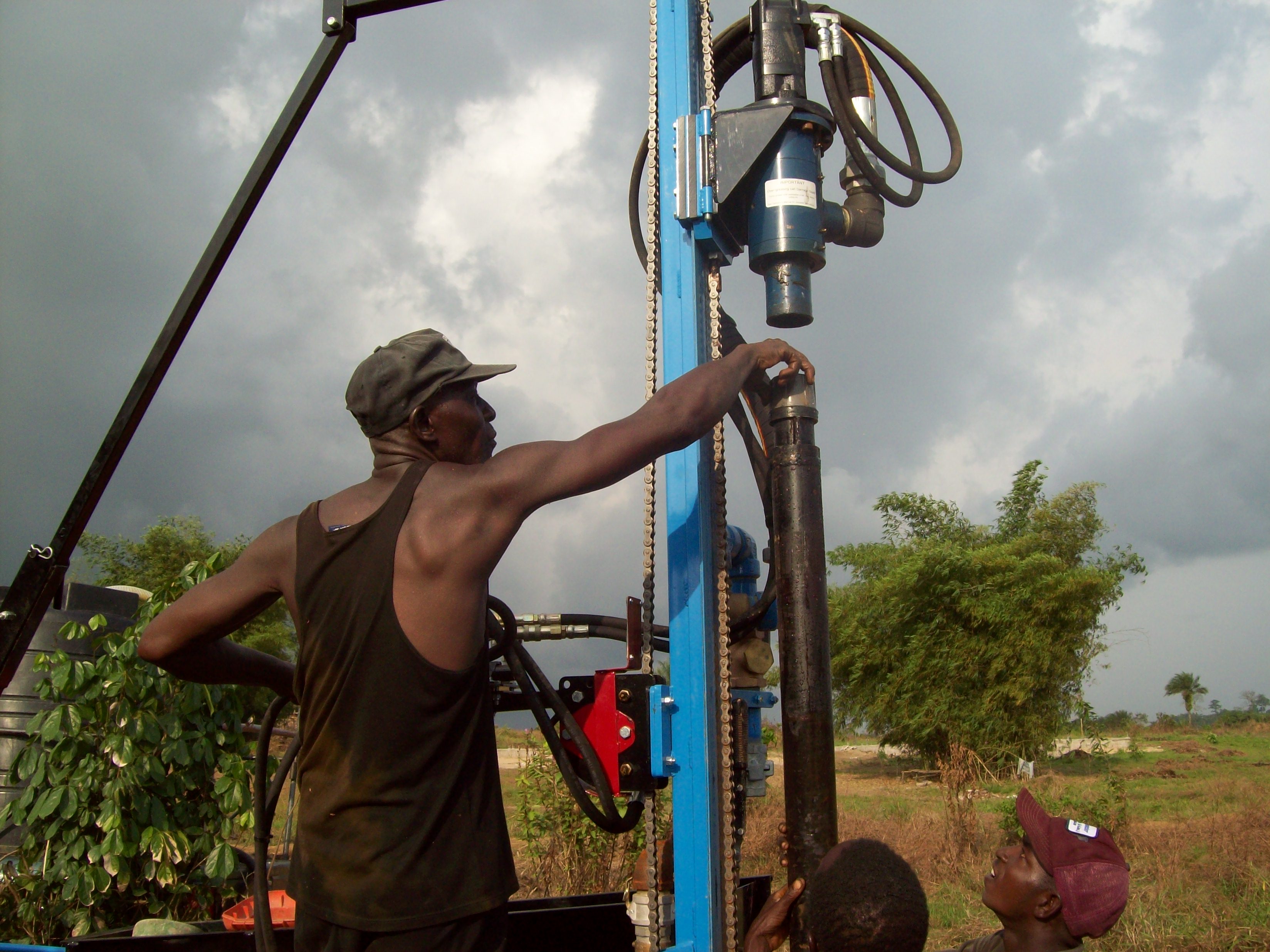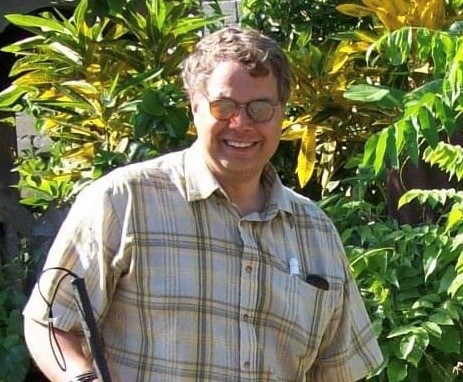⭠ back to development goals
DEVELOPMENT GOAL #1:
Meet Basic Water Availability Service Levels
Rationale: Beneficiaries should have year-round access to adequate quantities of water within 1 km of their homes and with minimum wait times. Failure to meet these requirements jeopardizes health as water use for hygiene will fall significantly.
TARGET 1: Located within 1km of 90% of users
| 3 Points |
The Operational Target of more than 90 per cent of the users being within one kilometre of the pump is a critical health measure because people are able to use a lot less water if wells are located far from their home.
While water use is optimized if pumps are within 100 metres of people's homes (intermediate service level), people's water use continues to meet the basic service level at pump distances up to one kilometre or a 30-minute total collection time. Beyond this, water consumption drops significantly, putting health at risk (Cairncross S, 1987, "The benefits of water supply", In Pickford, J (ed) Developing World Water. Grosvenor Press, London).
Although health gains derived from increased access between 100-metre and one-kilometre distances appear limited, there are other important gains including increased time for activities such as child care, food preparation, income-generating activities, and time in the classroom for girls.
Application Story: "The Girl Child"
From 2004-2007, there was building awareness within Lifewater about the link between water hauling distance and girls' performance in school. Several teachers spoke about girls being too tired to pay attention in school and having too little time before dark to do homework.
It was Hannah, a Grade 10 student and Lifewater volunteer, who made the connection when she and other volunteers visited an African school and spoke to girls who were coming late and tired to classes. The African girls talked about getting up well before dawn to walk to distant water holes. They described attacks by animals and even rape on remote paths. They talked about having to do these chores again after school and having no light to do homework when they were finally done their chores.
TARGET 2: Year-round water availability
| 3 Points |
In the hot season, water is needed more than ever to replenish sweat loss. Intermittent streams and shallow dug wells go dry.
While water tables fall during the hot season, Lifewater wells should continue producing water at a rate of at least two gallons per minute over a two-hour period of continuous pumping. If a well produces at least this amount of water, hand pumping to fill buckets can continue without any need to wait for the well to recharge.
Having a good-yield well is only part of the determination if whether basic service levels are met. As explained below, the number of users and the distance/time to collect water also need to be considered.
Application Story: Grinding Teeth and Rock
During the Liberian civil war, all Lifewater wells were drilled with the LS100 drilling rig. This lightweight unit is relatively safe for new drillers to use, can be easily carried in a pickup truck, and can create good water supplies in many places.

Drilling started in the community of "Sand Town". When the drillers hit hard rock at 45 feet, there was great concern, as this was the depth of hand-dug wells in the area that went dry in the hot season. The Lifewater drillers were told to keep drilling. The rig bounced around and progress was measured in inches per hour. The frustration of the drill team mounted, and soon they were grinding their teeth and saying this effort was pointless. Then at 55 feet, they broke through the hard rock layer that had been impenetrable to local well diggers. The well was finished at 60 feet with an impressive yield of eight gallons per minute! To this day, this is the only well in the area that does not go dry in the hot season. Many other communities have benefited as well from the lessons the drillers learned there, as they now drill deeper than the local hand-dug wells that don't provide water year-round!
TARGET 3: 150-600 users per well
| >600 = 0 points, 451-600 = 2 points, 301-450 = 3 points, 150-300 = 2 points, <150 = 1 point |
The World Health Organization has determined that a minimum of 7.5 litres of safe water per person per day will meet most people's domestic requirements. Thoserequirements include water for drinking, cooking, food preparation and personal hygiene.
Based on this domestic requirement, and assuming that it takes two minutes to rinse a bucket and pump it full of water, a village of 600 people will require the pump to be operated continuously for four hours in the morning and four hours in the late afternoon. These times drop to three hours in villages of 450 people and two hours in villages of 300 people:
Village Size |
Variable Description |
||
| 600 | 450 | 300 | Population |
| 2.5 | 2.5 | 2.5 | Number of people whose daily need served from one bucket – 19 Litres in a five-gallon bucket; 7.5 Litres/person/day – |
| 120 | 90 | 60 | Trips to water source each morning and evening |
| 2 | 2 | 2 | Minutes to wash and fill a bucket |
| 4 | 3 | 2 | Number of hours pumping each morning and evening |
The United Nations' "Millennium Development Agenda" included discussion of establishing a target of 300 people per hand pump. However, this was never formalized and by 2023 there were 771 million children and adults worldwide without access to an improved or filtered source of drinking water, according to the World Bank.
The United Nations has developed "Agenda 2030" which includes Target 6.1: "By 2030, achieve universal and equitable access to safe and affordable drinking water for all." The concept of "equitable access" is explained as users having access to safe drinking water within 100 metres of their homes.
Lifewater Canada believes it is unrealistic to expect this target to be met by 2030. In response, we have placed a high priority on providing access to safe drinking water across all of our current service areas. After this has been achieved, we will go back to these communities and provide more water systems where communities have proven their commitment to project maintenance and where there are more than 450 users per water system.
TARGET 4: Affordability
The smaller the population of a village, the less time their well must be operational each day, which mean less hand pump wear and tear. But as a village's size decreases, residents need to contribute more and more towards the initial well project and its annual maintenance.
As an extreme example, in a village of 45 families, raising $450 towards a new well would require each family to contribute $10. If that same village had only three families, each would have to contribute an unaffordable $150!
The same issue applies to annual pump maintenance costs.It's why extra assessment is required when contemplating drilling in small villages of less than 150 people. There is no point spending a large sum of money drilling a well if the population cannot afford to maintain it over time.
Application Story: You Don't Roast a Dog Quickly

At the end of his wits, Jim phoned a local friend who had pastored churches through difficult times. Anthony came and patiently listened as Jim poured out his frustrations. When Jim finally ran out of words, it was time for Anthony to respond.
After reflecting for a while, all he said was, "Brother Jim, you don't roast a dog quickly."
Puzzling advice indeed! Cultural differences were highlighted as Anthony explained that everyone knows that cat meat is sweet to eat, but dog meet is oily and tough. If you try and roast the dog quickly, the outside burns and the inside remains oily and unpalatable. To do it right, you put the dog on a spit over a low-heat coal fire for an entire day. Then the oil drains out, the meat cooks all the way through, and it makes a good stew over rice.
Anthony said most community leaders know this, and so they watch in dismay as aid groups come in with aggressive timelines trying to effect profound change in societies that have evolved over hundreds of years. Relationships that start gradually, and build trust, are the ones most likely to achieve effective partnerships and cooperative projects.
You don't roast a dog quickly. It's an insightful image for sustainable development that has helped guide the work of Lifewater for many years!

